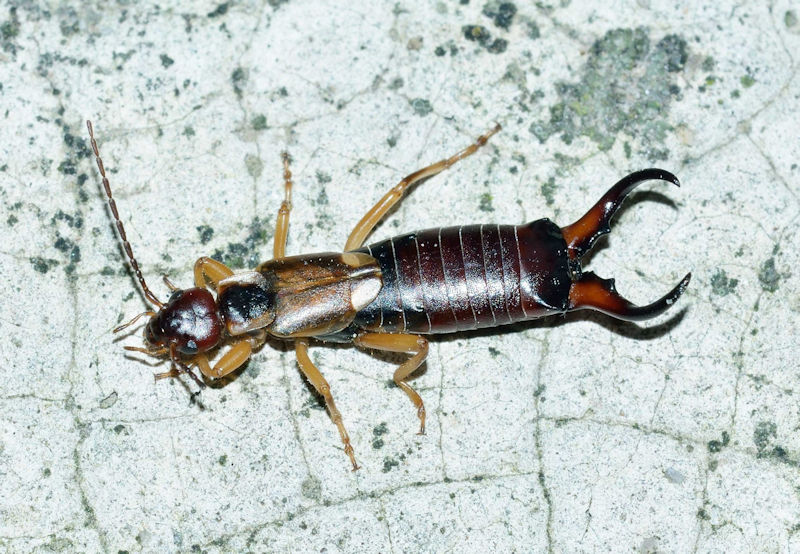How to Manage Earwig Pests for Homeowners
Some people may believe these bugs are creepy, but they can cause real trouble for your home and garden. They ruin plants, invade wet areas, and reduce the comfort of your home. This guide will provide you with effective prevention techniques and natural ways to eliminate them if you have been wondering how to remove earwigs.
What Are Earwigs and Where Do They Live?
Earwigs are little insects that prefer moist, dark locations. They reside under mulch, piles of leaves, and decaying timber outdoors. Inside, they lurk in your basement, crawlspace, and any cracks around the walls. Earwigs are nocturnal, so they are busy looking for food at night, which is when they are most active.
What Do Earwigs Eat?
Earwigs are omnivores that feed on both plants and insects. Their diet includes:
- Broken twigs and branches
- Small insects and their larvae
- Live plants such as flower petals and stems
Though stomach-churning in appearance, earwigs help break down organic materials. However, they can damage your garden plants and make outdoor living spaces less inviting.
Ways to Avoid Earwig Infestations
Earwig prevention starts with eliminating the items that attract them. Follow these easy steps to keep your home and garden safe:
- Tidy Up Your Yard:
- Remove leaf piles, decaying wood, and excess mulch.
- Prune shrubs and low-hanging branches to minimize shaded, moist locations.
- Fix Moisture Problems:
- Repair worn-out taps and drains.
- Avoid overwatering plants and ensure proper drainage in your yard.
- Seal Entry Points:
- Inspect your house for cracks in the foundation, walls, windows, and door linings.
- Seal leaks or gaps with caulk or weatherstripping.
- Adjust Outdoor Lighting:
- Replace with yellow or sodium vapor bulbs, which earwigs find less attractive.
- Do not put lights near entry points.
Natural Ways to Get Rid of Earwigs
If earwigs have already settled in, try these natural solutions to evict them:
- Use Diatomaceous Earth:
Sprinkle food-grade diatomaceous earth in areas with earwig activity. The powder is natural and kills them by dehydrating them without harming pets or humans. - Set Traps:
- Use a shallow dish with oil or soapy water.
- Place traps in moist, dark areas and wait for the earwigs overnight.
- Maintain Garden Hygiene:
- Remove dead leaves and plant material.
- Avoid over-mulching as it creates hiding spots for earwigs.
- Encourage Natural Predators:
Attract earwig predators, such as birds and ground beetles, to your garden by planting flowers and shrubs that provide food and shelter for them.
Earwig Control FAQs
Q: Do earwigs harm humans?
A: No, earwigs don’t bite or sting. While they look frightening, they pose no direct danger to humans.
Q: Can earwigs damage my plants?
A: Yes, earwigs can nibble on leaves, flowers, and stems, which can harm your plants.
Q: Are there chemical treatments for earwigs?
A: There are chemical sprays available, but they can kill beneficial insects. Safer options include traps and diatomaceous earth.
Q: How long does it take to get rid of earwigs?
A: It usually takes a couple of weeks to gain control over earwigs. Preventive measures and natural treatments yield the best results over time.
How to Get Rid of Earwigs Now
By knowing where earwigs inhabit and how to avoid attracting them, you can protect both your home and garden from these pests. Start by cleaning your yard, sealing entry points, and using natural pest control methods like diatomaceous earth and traps.
Don’t let earwigs settle in your home. Act now and enjoy a pest-free environment for you and your family! Visit our website for more tips and solutions.
References:
1.) Forbes – “How to Get Rid of Earwigs” (https://www.forbes.com/home-improvement/pest-control/get-rid-of-earwigs/#:~:text=Sprinkle%20some%20boric%20acid%20powder,or%20pets%20aren’t%20present.)
2.) Planet Friendly Pest Control – “Crawl Space Encapsulation: Benefits, Drawbacks, and FAQs” (https://planetfriendlypestcontrol.com/crawl-space-encapsulation-benefits-drawbacks-and-faqs/)
3.) Forbes – “Best Pest Control Companies or 2024” (https://www.forbes.com/home-improvement/pest-control/best-pest-control-companies/)
NEED HELP?
If you live in Southern Maryland, or Northern Virginia
FIND YOUR SOLUTION HERE
People, Pet & Pollinator Safe! Pest control for people who care.
